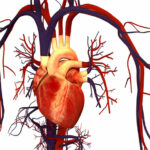PERSPECTIVES WITH DR ALAN BARCLAY
WATER, THIRST AND HYDRATION
Water is an essential nutrient – in fact, more important to life than all other nutrients. The average healthy adult can survive just 2–5 days without water, but several months without food. Water is essential to life because it:
- Helps with the regulation of body temperature, as the evaporation of sweat from the skin removes excess heat from the body
- Acts as a lubricant and helps cushion joints, the spinal cord, etc
- Helps maintain the structure of certain proteins and glycogen
- Carries nutrients and waste products throughout the body
- Acts as a solvent for vitamins, minerals, amino acids, sugars, etc so that they can participate in metabolic activities
- Maintains blood volume.

THIRST The average adult body contains 35–45 litres of water, which makes up around 60% of total body weight. Two thirds of it is located within our cells (75% in lean tissue and 25% in fat tissue) and is known as intra-cellular fluid, and the rest is in our blood, body cavities and between cells in organs and tissues, and is consequently known as extra-cellular fluid.
Extra-cellular fluid contains a variety of minerals including sodium, potassium, calcium and magnesium which are paired with chloride and/or bicarbonate to form salts. The kidneys adjust the excretion of water to keep the concentration of these salts in the extra-cellular fluids at a constant concentration. This in turn helps balance out the concentration of fluids within cells (intra-cellular fluid).
When the concentration of the salts in the extra-cellular fluids increases due to dehydration, a specialised part of our brain called the hypothalamus:
- Sends a message to another part of the brain that causes the sensation of thirst
- Signals the pituitary gland to releases a hormone called vasopressin (or antidiuretic hormone (ADH) depending on which country you live in), into the blood that signals the kidneys to increase the reabsorption of water and return it to the blood.
The kidneys also sense if blood pressure is too low and release a hormone called renin, that through a complex series of events, causes the kidneys to reabsorb more sodium. This in turn helps the kidneys retain more water.
Finally, there are also neural pathways from sensors in the heart and major blood vessels that stimulate thirst and the release of vasopressin/ADH when the volume of blood shrinks.
These complex mechanisms enable the body to maintain optimal hydration throughout each day, under a broad range of environmental conditions, even when exercising. The fact that most people maintain much the same body weight on a day-to-day basis indicates that total body water is kept constant, with gains carefully balanced by losses.
KEEPING HYDRATED Most people know that they should aim to drink at least 6 glasses of water each day. Here’s how that advice came about. For optimal health and well-being, we need between 35–45 ml of fluid for every kilogram of our body weight each day, depending on gender, level of physical activity, body composition and of course the weather.
As an example, an average woman weighing 71kg (157 pounds) needs between 2.5–3.2 litres of fluid each day, and an average man weighing 86kg (190 pounds) between 3.0–3.9 litres.
Not all fluids need to come from beverages, however, as believe it or not, around 750ml (around 3 cups) comes from food and a further 250ml from the metabolism of food.
So, on average, women should aim to drink 1.5–2.2 litres (6–9 cups) each day and men 2.0–2.9 litres (8–12 cups) each day.
Don’t overdo it. Water intoxication is rare but can occur if you consume 10–20 litres of fluids within a few hours. Confusion, convulsions and even death can occur due to dangerously low sodium levels in the blood that affects cell functioning.
While water is an essential nutrient, like most things, too much can kill. The dose makes the poison.
Read more:

Alan Barclay, PhD is a consultant dietitian and chef (Cert III). He worked for Diabetes Australia (NSW) from 1998–2014 . He is author/co-author of more than 30 scientific publications, and author/co-author of The good Carbs Cookbook (Murdoch Books), Reversing Diabetes (Murdoch Books), The Low GI Diet: Managing Type 2 Diabetes (Hachette Australia) and The Ultimate Guide to Sugars and Sweeteners (The Experiment, New York).
Contact: You can follow him on Twitter or check out his website.







